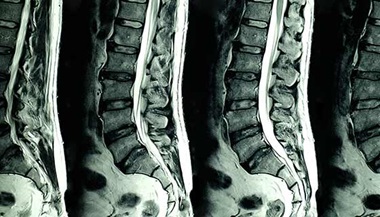Nerve Conduction Studies
What is a nerve conduction velocity test?
.png?h=157&iar=0&mh=360&mw=520&w=200&hash=85193CCBAF7A6289564CF21CFB31B3C5)
During the test, your nerve is stimulated, usually with electrode patches attached to your skin. Two electrodes are placed on the skin over your nerve. One electrode stimulates your nerve with a very mild electrical impulse. The other electrode records it. The resulting electrical activity is recorded by another electrode. This is repeated for each nerve being tested.
The speed is then calculated by measuring the distance between electrodes and the time it takes for electrical impulses to travel between electrodes.
A related test that may be done is an electromyography (EMG). This measures the electrical activity in your muscles. It is often done at the same time as an NCV. Both tests help find the presence, location, and extent of diseases that damage the nerves and muscles.
Why might I need a nerve conduction velocity test?
NCV is often used along with an EMG to tell the difference between a nerve disorder and a muscle disorder. NCV detects a problem with the nerve, whereas an EMG detects whether the muscle is working properly in response to the nerve's stimulus.
Diseases or conditions that may be checked with NCV include:
-
Guillain-Barré syndrome. A condition in which the body's immune system attacks part of the peripheral nervous system. The first symptoms may include weakness or a tingling sensation in the legs.
-
Carpal tunnel syndrome. A condition in which the median nerve, which runs from the forearm into the hand, becomes pressed or squeezed at the wrist by enlarged tendons or ligaments. This causes pain and numbness in the fingers.
-
Charcot-Marie-Tooth disease. An inherited neurological condition that affects both the motor and sensory nerves. It causes weakness of the foot and lower leg muscles.
-
Herniated disk disease. This condition occurs when the fibrous cartilage that surrounds the disks of your vertebrae breaks down. The center of each disk, which contains a gelatinous substance, is forced outward. This places pressure on a spinal nerve and causes pain and damage to the nerve.
-
Chronic inflammatory polyneuropathy and neuropathy. These are conditions resulting from diabetes or alcoholism. Symptoms may include numbness or tingling in a single nerve or many nerves at the same time.
-
Sciatic nerve problems. There are many causes of sciatic nerve problems. The most common is a bulging or ruptured spinal disk that presses against the roots of the nerve leading to the sciatic nerve. Pain, tingling, or numbness often result.
Nerve conduction studies may also be done to find the cause of symptoms, such as numbness, tingling, and continuous pain.
Other conditions may prompt your healthcare provider to recommend NCV.
What are the risks of NCV tests?
The voltage of the electrical pulses used during an NCV is considered very low.
Risks depend on your specific medical condition. Be sure to discuss any concerns with your healthcare provider before the procedure.
Certain factors or conditions may interfere with the results of NCV tests. This includes damage to the spinal cord, severe pain before the test, and body temperature.
Tell your healthcare provider if you have a cardiac defibrillator or pacemaker, as precautions may need to be taken.
How do I get ready for an NCV test?
-
Your healthcare provider will explain the procedure and you can ask questions.
-
You will be asked to sign a consent form that gives your permission to do the procedure. Read the form carefully and ask questions if something is not clear.
-
Generally, you will not need to fast or get sedation before the procedure.
-
Normal body temperature must be maintained before and during the procedure, as low body temperature slows nerve conduction.
-
Tell your healthcare provider of all medicines (prescription and over-the-counter) and herbal supplements that you take.
-
Dress in clothes that allow access to the area to be tested or that are easily removed.
-
Stop using lotions or oils on your skin for a few days before your procedure.
-
Based on your medical condition, your healthcare provider may request other preparation.
What happens during the NCV test?
An NCV procedure may be done on an outpatient basis, or as part of your stay in a hospital. Procedures may vary depending on your condition and your doctor's practices.
The NCV is done by a neurologist. This is a doctor who specializes in brain and nerve disorders. A technologist may also do some parts of the test.
Generally, an NCV procedure follows this process:
-
You will be asked to remove any clothing, jewelry, hairpins, eyeglasses, hearing aids, or other metal objects that may interfere with the procedure.
-
If you are asked to remove clothing, you will be given a gown to wear.
-
You will be asked to sit or lie down for the test.
-
A neurologist will locate the nerve(s) to be studied.
-
A healthcare provider will attach a recording electrode to the skin over your nerve, using a special paste. He or she will then place a stimulating electrode away from the recording electrode, at a known distance.
-
A mild and brief electrical shock, given through the stimulating electrode, will stimulate your nerve.
-
You may experience minor discomfort for a few seconds.
-
The stimulation of the nerve and the response will be displayed on a monitor.
What happens after an NCV?
The paste used to attach the electrodes will be removed from your skin.
After the test, you may return to your previous activities, unless your healthcare provider advises you differently. Your healthcare provider may instruct you to avoid strenuous activities for the rest of the day.
Your healthcare provider may give you other instructions after the procedure, depending on your situation.






